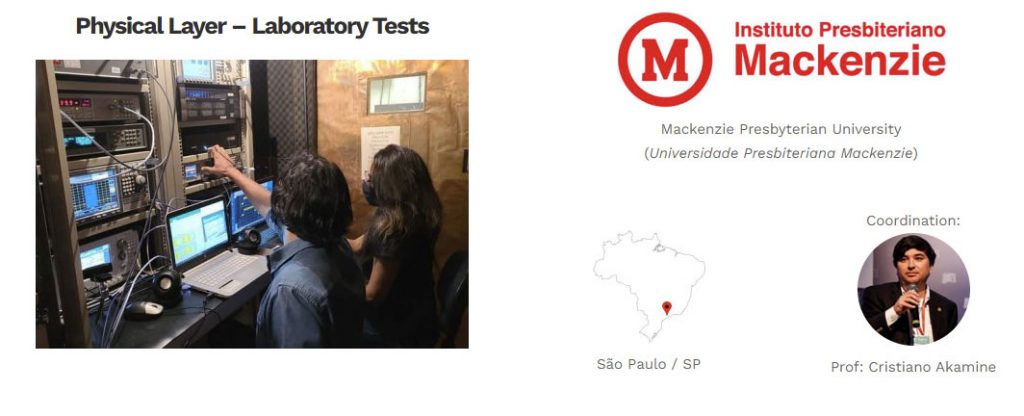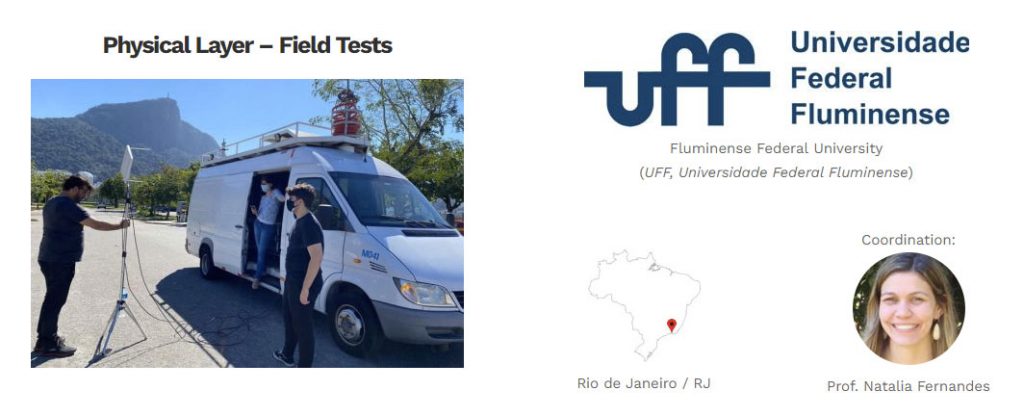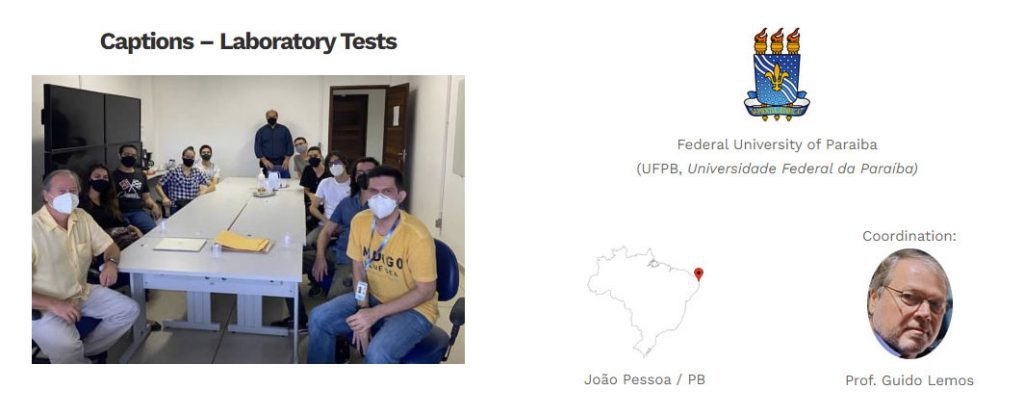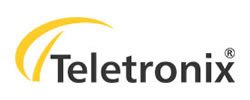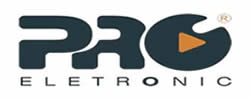
TV 3.0 Project

Since then, the technological landscape changed a lot. Based on this technological landscape, the SBTVD Forum recognized the necessity to evolve the SBTVD. It also acknowledged that changing the physical layer, the transport layer, and/or audiovisual coding would not be backward-compatible. Nevertheless, the transition to a new generation of Digital Terrestrial Television is a long process, based on the investments required for both broadcasters and consumers and the expected life span of TV transmitters and receivers. It was, therefore, deemed necessary to increase the life span of the existing Digital Terrestrial Television system as much as possible through a backward-compatible evolution (a project we called “TV 2.5”) and to start the development of the next generation Digital Terrestrial Television system (the project we called “TV 3.0”).
TV 3.0

Brazilian Presidential Decree No. 11.484 / 2023 – Provides the guidelines for the evolution of the Brazilian Digital Terrestrial Television System and for ensuring the availability of radio frequency spectrum for its deployment
In April 2023, the Brazilian Presidential Decree No. 11,484, which provides the guidelines for the evolution of the Brazilian Digital Terrestrial Television System and for ensuring the availability of radio spectrum for its deployment, was published (available at http://www.planalto.gov.br/ccivil_03/_ato2023-2026/2023/decreto/D11484.htm, in Portuguese only).
It establishes that the next-generation Digital Terrestrial Television Broadcasting (DTTB) system in Brazil, called TV 3.0, shall have the following characteristics:
I. audiovisual quality superior to that of the first-generation Brazilian DTTB system;
II. fixed reception, with external and internal antenna, and mobile reception;
III. integration between contents transmitted by the broadcasting service and over the internet;
IV. app-based user interface;
V. content segmentation according to viewers’ geographic location;
VI. customization of content according to viewers’ preferences;
VII. optimized use of the radio frequency spectrum destined for terrestrial television broadcasting; and
VIII. new forms of access to cultural, educational, artistic, and informative contents.
It states that the Ministry of Communications will support the SBTVD Forum so that the studies related to the technological innovations that may comprise TV 3.0 are completed by December 31, 2024, including the technical requirements for the receivers that will allow the adaptation from the current digital television technology to TV 3.0.
It determines that the National Telecommunications Agency (Anatel) shall conduct studies on the frequency planning of TV 3.0 until December 31, 2024, and promote actions to ensure:
I. regulatory stability, through the availability of frequency bands necessary for the evolution of terrestrial television broadcasting; and
II. implementation of digital terrestrial television in Brazil and its technological evolution.
Finally, it states that the Ministry of Communications will constitute and coordinate a working group to propose regulations for TV 3.0, with the participation of representatives from Anatel, the Ministry of Science, Technology, and Innovation, the Ministry of Finance, the SBTVD Forum and entities representing the broadcasting sector. The deadline for the completion of activities by the working group is December 31, 2024.
Physical Layer Field Test
Considering the Phase 3 physical layer laboratory results, the video bitrate requirements resulting from the Phase 3 real-time video coding subjective quality assessment, as well as the bitrate requirements of the other system components (audio, captions, sign language and applications) and the transport layer overhead, it was concluded that, under the current technology development status, it would not be possible to operate the TV 3.0 over-the-air physical layer with frequency reuse-1 for non-directional receiving antennas (that would require C/N < 0 dB) with enough capacity to ensure audiovisual quality higher than the maximum possible in the first-generation Brazilian DTTB system with a 6 MHz channel with 2×2 MIMO.
It was then decided to test, for each of the candidate technologies (Advanced ISDB-T and ATSC 3.0) the most robust configuration (with the lowest C/N requirement) that would deliver at least 30 Mbps in a single Physical Layer Pipe (PLP) with a 6 MHz channel with 2×2 MIMO, 16K FFT and guard interval higher than 100 µs. This capacity is enough to carry one 8K HDR program service (the required bitrate for 8K was extrapolated from the subjective test results for 720p, 1 080p and 4K), or two 4K HDR program services, or three 1 080p HDR program services with audiovisual quality higher than the maximum possible in the first-generation Brazilian DTTB. It would also be possible to carry one 1 080p HDR program service and three 720p HDR program services, or five 720p HDR program services (in the case of 720p HDR program services, they would have, in the worst case, slightly lower subjective quality than the maximum possible with 1 080i in the first-generation Brazilian DTTB). The quantity and/or resolution of program services could be increased if the quality requirements are relaxed and/or with better VVC encoder performance (either with real-time encoder implementation improvement or using multi-pass or offline encoding). The use of 2×2 MIMO in a single PLP aims to minimize the C/N requirement for the desired capacity, in order to facilitate fixed indoor reception by minimizing the required field strength. The use of the 16K FFT seeks a balance between the spectral efficiency for fixed reception and the speed limit for mobile reception. The use of a guard interval higher than 100 µs is intended to allow SFN operation with the re-utilization of transmission sites currently operating on SFNs in Brazil.
The physical layer field test has two main objectives:
- Comparison of candidate technologies (the lower the C/N requirement measured in the field to deliver the desired capacity, the better); and
- Measurement of the C/N requirement to be recommended to Anatel (Brazilian National Telecommunications Agency) for frequency planning purposes.
It should be noted that TV 3.0 standardization will not prescribe the physical layer configuration to be used by different broadcasters, but the C/N value adopted for frequency planning in Brazil may impose practical coverage and/or interference limitations on the use of configurations with higher C/N values. It will still be possible for a broadcaster to opt for a configuration that allows frequency reuse-1 for non-directional receiving antennas (with a C/N requirement below 0 dB), to facilitate the geographical segmentation of content delivery over the air within the area of an SFN. In this case, the capacity (bitrate) limitation may require a relaxation of the video quality requirement and/or an improvement in video coding performance.
But even when operating with a C/N requirement that does not allow the frequency reuse-1, there are still other alternatives to be explored that could allow geographical segmentation of content delivery within an SFN’s coverage area. One possibility would be to have geo-targeted content delivered over the internet (for connected receivers) using IP-based geolocation. Another possibility would be for each transmitter to broadcast a unique identifier (with C/N < 0 dB) that would allow the receiver to recognize which transmitter best serves it, and thus determine the geolocation polygon in which it is located independently of broadband connectivity and more accurately and reliably than geolocation based on IP address; then the geo-targeted content could be delivered over the internet (for connected receivers) or as an alternative content delivered over the air and selected by a broadcast application regardless of broadband connectivity. A third possibility would be to use two PLPs in each SFN transmitter, with different C/N requirements; the more robust one synchronized between the different SFN transmitters carrying the most general (non-geo-targeted) content and the less robust one carrying geo-targeted content that would be different between the transmitters, the reception of which would only be possible when the receiver is sufficiently closer to one transmitter than the other to meet the required protection ratio.
All these possibilities are being investigated by the SBTVD Forum, as the ability to provide content segmentation according to viewers’ geographic location is one of the requirements for TV 3.0 established by the Brazilian Presidential Decree No. 11,484 / 2023. Taking this into account, additional configurations can be included in the Phase 3 physical layer field test.
Phase 3 physical layer field testing began in December 2023 and is scheduled to end in May 2024. It is being carried out in Rio de Janeiro, by the Fluminense Federal University, under the coordination of the SBTVD Forum. In June 2024, based on the results of this test, in conjunction with all other information gathered by the SBTVD Forum about the candidate technologies since Phase 1 of the Project in 2020, the SBTVD Forum will recommend one of the TV 3.0 physical layer candidate technologies to the Brazilian Government, which will subsequently announce its final decision.
Real-Time Video Coding Subjective Quality Assessment Results
As indicated in the Brazilian Presidential Decree No. 11,484 / 2023, the next-generation Digital Terrestrial Television Broadcasting (DTTB) system in Brazil, called TV 3.0, shall have the audiovisual quality superior to that of the first-generation Brazilian DTTB system.
To ensure the fulfilment of this requirement, a subjective assessment was set-up to compare the maximum quality achievable with real-time video coding for the first-generation Brazilian DTTB system (H.264 High profile @ L4, 1 920 × 1 080/59.94/I, 4:2:0, 8-bit, BT.709, SL-HDR1, at 14 Mbps) and the quality resulting from real-time video coding using the technologies selected for TV 3.0 at different configurations and bitrates. The results of this test were meant to be considered for the determination of the minimum bitrate of the main over-the-air physical layer configuration to be tested on the field.
The report of the Real-Time Video Coding Subjective Quality Assessment is available in the link below:
Phase 3 - Real-Time Video Coding Subjective Quality Assessment
Physical Layer Laboratory Results
As planned for Phase 3 of the TV 3.0 Project, from April to September 2023, Mackenzie University tested the physical layer candidate technologies in the laboratory for the SBTVD Forum to select two of them to continue to the field tests. The results were considered, in conjunction with all other information gathered by the SBTVD Forum about the candidate technologies since Phase 1 of the Project in 2020, by the Technical and Market Modules on 18 September 2023 and subsequently by the SBTVD Forum board on 25 September 2023. All these instances unanimously agreed to select ATSC 3.0 and Advanced ISDB-T for the field tests, as they demonstrated a better fit with the specific requirements of the TV 3.0 Project.
The report of Phase 3 Physical Layer Laboratory tests is available in the link below:
Phase 3 - Physical Layer – Lab Tests
Schedule
Funding
From April 2023 to September 2024, the SBTVD Forum, with the support of a group of Brazilian universities funded by the Brazilian Ministry of Communications through the Brazilian National Education and Research Network (“Rede Nacional de Ensino e Pesquisa” – RNP), are:
– Performing complementary tests for the selection of the physical layer technology (laboratory and field tests), among the current candidate technologies (Advanced ISDB‑T, ATSC 3.0 and 5G Broadcast – DTMB-A proposal has been withdrawn by the proponent);
– Developing the necessary adaptations and extensions to the ROUTE/DASH transport layer specification alongside a reference mux/demux implementation;
– Performing a subjective assessment of the TV 3.0 video coding technologies quality (VVC and LCEVC) for the determination of the required bitrate;
– Developing adaptations and extensions to DTV Play for TV 3.0 Application Coding alongside an Integrated Development Environment (IDE) and a test suite;
– Finalizing technical standards, operational guidelines and conformance testing for TV 3.0; and
– Developing end-to-end system demonstrations.
– Around 90 researchers from nine Brazilian Universities are involved in Phase 3.
Universities
Application Coding – R&D

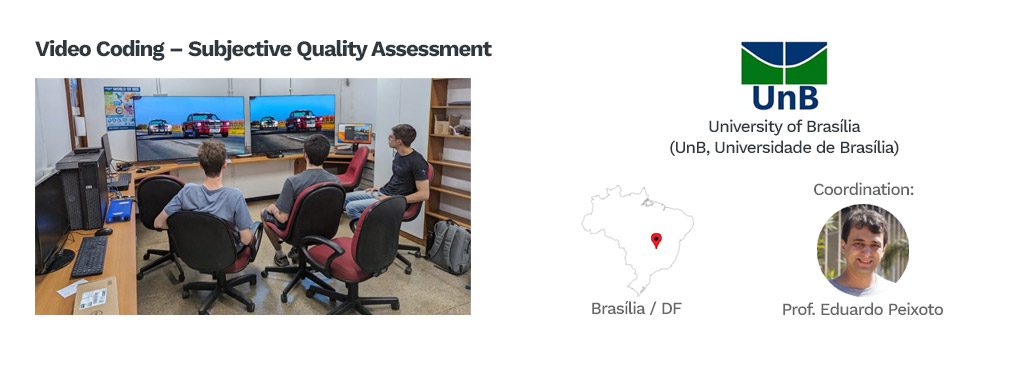



Results
Considering the results of the TV 3.0 Project Phase 2 testing and evaluation, as well as market and intellectual property aspects of the candidate technologies, the SBTVD Forum forwarded its recommendations on the selection of candidate technologies to the Brazilian Ministry of Communications. These recommendations have obtained the agreement of the Brazilian Ministry of Communications for disclosure by the SBTVD Forum. The following decisions were adopted for the continuation of the TV 3.0 Project:
Over-the-air Physical Layer
– To perform additional tests. Condition for participation: to provide equipment with support for reuse-1, MIMO, and channel-bonding. Only the two best lab results go on to field tests. The technology would only be selected at the end of the second round of testing if the bitrate in the reuse-1 condition is sufficient; otherwise, the reuse-1 condition will need to be revised.
Transport Layer
– To adopt the ROUTE/DASH technology as the basis of the TV 3.0 transport layer and adapt/extend it to support all the project requirements and the technologies to be adopted in the other layers.
– To maintain optional support for HLS streaming (as currently available in the TV 2.5 specification) for distribution of alternative content over the Internet.
Video Base Layer
– To adopt VVC for the main video (both over-the-air and over the Internet) and perform subjective video quality assessments to determine the bitrate needed for real-time encoding at different resolutions (considering base layer only and in combination with the enhancement layer).
– To evaluate the most suitable video coding for transmitting a second video with a sign language interpreter.
– To maintain support for H.264 and H.265 video (as currently available in the TV 2.5 specification) for distribution of alternative content over the Internet.
Video Enhancement
– To adopt a combination of Dynamic Resolution Encoding and LCEVC.
HDR
– To adopt HDR10 as the base (format already supported on all HDR TVs), with optional support for Dolby Vision, HDR10+ and SL-HDR2 dynamic metadata (both over-the-air and over the Internet).
– To maintain optional support for HLG and SL-HDR1 (as currently available in the TV 2.5 specification) for the distribution of alternative content over the Internet.
VR Codec
– To adopt V3C for inclusion in TV 3.0 standards (support will not be mandatory in all receivers; focus on content distribution over the Internet and consumption on smartphones and HMDs).
Emergency Warning System
– To adopt ATSC 3.0 Advanced Emergency Alert.
Audio Coding
– To adopt MPEG-H Audio for over-the-air and Internet distribution.
– To maintain the other audio formats currently supported in TV 2.5 for distribution of alternative content over the Internet (including optional AC-4 support).
Captions
– To adopt IMSC1 for over-the-air and Internet distribution.
– To maintain optional support for WebVTT (as currently available in the TV 2.5 specification) for distribution of alternative content over the Internet.
Application Coding
– To adapt and extend DTV Play, including the satisfactorily tested proposals (MPEG-H Audio, Guaraná, and NCL 4.0) and considering including parts of the Advanced ISDB-T, DTNEL Application Coding, and ATSC 3.0 proposals (depending on the results of their prototyping).
– To fill the gaps in requirements that were not satisfactorily fulfilled by the received proposals, when necessary.
Reports
The reports of Phase 2 Testing and Evaluation are available in the links below:
Funding
Phase 2 tests were carried out from 05 July 2021 to 03 December 2021. They were funded by the Brazilian Ministry of Communications through the Brazilian National Council for Scientific and Technological Development (CNPq, Conselho Nacional de Desenvolvimento Científico e Tecnológico), involving about 70 researchers from 7 different Brazilian Universities.
Universities
Partners
The funding made available by the Brazilian Ministry of Communications was destined for the payment of scholarships to the researchers involved. The equipment used in the tests was provided by the candidate technologies’ proponents, the participating Universities, and SBTVD Forum members. The transmitting antenna systems currently used in the Physical Layer field tests were provided by Ideal Antenas and RFS. Teletronix provided UHF driver amplifiers for use in the Physical Layer tests. The rasterizer used in the Video Coding tests was provided by Phabrix.
Test Procedures
The “TV 3.0 CfP Phase 2 / Testing and Evaluation” document (revised version - 15 March 2021) can be found here
The “TV 3.0 CfP Phase 2 / Testing and Evaluation” document provided further information and requirements for Phase 2, along with the test procedures for evaluating and comparing the proposals of candidate technologies and instructions on providing Phase 2 responses.
Responses to the Call for Prototypes of MIMO indoor antennas
The Call for Prototypes of MIMO indoor antennas received 4 prototype models to be used in the field tests (alongside the antennas provided by the physical layer candidate technologies’ proponents) from the following organizations:
Call for Prototypes of MIMO indoor antennas
Details on the TV 3.0 Call for Prototypes of MIMO indoor antennas (revised version - 28 January 2021) can be found here.
The Phase 2 over-the-air physical layer field test required the use of MIMO indoor antennas. The physical layer candidate technologies’ proponents were requested to provide antennas for the test, but the SBTVD Forum also used MIMO indoor antennas of other providers, as reference. The inclusion of additional antennas in the test was important to verify the reception performance using antennas with characteristics closer to what would be obtained in the end-user consumer electronics products. This information also assists the determination of the minimum required field strength for indoor reception of the candidate technologies.
For this reason, the SBTVD Forum also released, in December 2020, a Call for Prototypes of MIMO indoor antennas, for which commercial product implementations are still practically non-existent, as this innovative new technology has not yet begun to be used in Digital Terrestrial Television (DTT) transmission, except in research and development activities.
Due to the use of MIMO, the introduction of TV 3.0 will require the introduction of a new antenna at each DTT reception point, creating a great potential market for the new reception antennas.
Responses to the Call for Proposals
The Call for Proposals received in total, considering its 6 system components (Over-the-air Physical Layer, Transport Layer, Video Coding, Audio Coding, Captions, and Application Coding), 36 responses from 21 different organizations worldwide. Some similar proposals were merged for the sake of Phase 2 testing and evaluation, resulting in 30 candidate technologies.
Over-the-air Physical Layer Candidate Technologies
Transport Layer Candidate Technologies
Video Coding Candidate Technologies
Audio Coding Candidate Technologies
Captions Candidate Technologies
Application Coding Candidate Technologies
Call for Proposals
The SBTVD Forum, after agreeing on the requirements (use cases and corresponding technical specifications) for the “TV 3.0” project, decided to release, in July 2020, a Call for Proposals for any interested organization to submit its proposed candidate technologies for any of the system components or sub-components.
The deadline for Phase 1 responses regarding the Over-the-air Physical Layer, Transport Layer, Video Coding, Audio Coding, and Captions expired on 30 November 2020. The deadline for Phase 1 responses regarding Application Coding expired on 26 March 2021.
TV 3.0
Phase 3
Phase 3 is underway. It will last about two and a half years (from February 2022 to August 2024).
In 2022, we are working on drafting the technical specifications for video coding, audio coding, and captions and planning all the details of the 2023-2024 activities.
From January to June 2023, we will perform a subjective assessment of the video coding quality (for determining the necessary bitrate) and complementary laboratory tests for the physical layer technology selection. In July 2023, two physical layer candidate technologies will be selected to go forward for the field tests, which will take place from August 2023 to January 2024. The final decision on the physical layer technology is expected in February 2024. The corresponding technical specification will be drafted from March to June 2024.
Meanwhile, R&D on the transport layer (development of the necessary adaptations and extensions to the ROUTE/DASH specification, along with a reference mux/demux implementation) and on the application coding (development of adaptations and extensions to DTV Play for TV 3.0 Application Coding, along with an IDE and a test suite) and the drafting of the corresponding technical specifications will take place from January 2023 to June 2024.
An end-to-end demonstration of TV 3.0, integrating all its system components, is planned for the SET Expo in August 2024.
TV 3.0 is expected to launch in 2025.
Results
Considering the results of the TV 3.0 Project Phase 2 testing and evaluation, as well as market and intellectual property aspects of the candidate technologies, the SBTVD Forum forwarded its recommendations on the selection of candidate technologies to the Brazilian Ministry of Communications. These recommendations have obtained the agreement of the Brazilian Ministry of Communications for disclosure by the SBTVD Forum. The following decisions were adopted for the continuation of the TV 3.0 Project:

Over-the-air Physical Layer
– To perform additional tests. Condition for participation: to provide equipment with support for reuse-1, MIMO, and channel-bonding. Only the two best lab results go on to field tests. The technology would only be selected at the end of the second round of testing if the bitrate in the reuse-1 condition is sufficient; otherwise, the reuse-1 condition will need to be revised.
Transport Layer
– To adopt the ROUTE/DASH technology as the basis of the TV 3.0 transport layer and adapt/extend it to support all the project requirements and the technologies to be adopted in the other layers.
– To maintain optional support for HLS streaming (as currently available in the TV 2.5 specification) for distribution of alternative content over the Internet.
Video Base Layer
– To adopt VVC for the main video (both over-the-air and over the Internet) and perform subjective video quality assessments to determine the bitrate needed for real-time encoding at different resolutions (considering base layer only and in combination with the enhancement layer).
– To evaluate the most suitable video coding for transmitting a second video with a sign language interpreter.
– To maintain support for H.264 and H.265 video (as currently available in the TV 2.5 specification) for distribution of alternative content over the Internet.
Video Enhancement
– To adopt a combination of Dynamic Resolution Encoding and LCEVC.
HDR
– To adopt HDR10 as the base (format already supported on all HDR TVs), with optional support for Dolby Vision, HDR10+ and SL-HDR2 dynamic metadata (both over-the-air and over the Internet).
– To maintain optional support for HLG and SL-HDR1 (as currently available in the TV 2.5 specification) for the distribution of alternative content over the Internet.
VR Codec
– To adopt V3C for inclusion in TV 3.0 standards (support will not be mandatory in all receivers; focus on content distribution over the Internet and consumption on smartphones and HMDs).
Emergency Warning System
– To adopt ATSC 3.0 Advanced Emergency Alert.
Audio Coding
– To adopt MPEG-H Audio for over-the-air and Internet distribution.
– To maintain the other audio formats currently supported in TV 2.5 for distribution of alternative content over the Internet (including optional AC-4 support).
Captions
– To adopt IMSC1 for over-the-air and Internet distribution.
– To maintain optional support for WebVTT (as currently available in the TV 2.5 specification) for distribution of alternative content over the Internet.
Application Coding
– To adapt and extend DTV Play, including the satisfactorily tested proposals (MPEG-H Audio, Guaraná, and NCL 4.0) and considering including parts of the Advanced ISDB-T, DTNEL Application Coding, and ATSC 3.0 proposals (depending on the results of their prototyping).
– To fill the gaps in requirements that were not satisfactorily fulfilled by the received proposals, when necessary.
Reports
The reports of Phase 2 Testing and Evaluation are available in the links below:
Funding
Phase 2 tests were carried out from 05 July 2021 to 03 December 2021. They were funded by the Brazilian Ministry of Communications through the Brazilian National Council for Scientific and Technological Development (CNPq, Conselho Nacional de Desenvolvimento Científico e Tecnológico), involving about 70 researchers from 7 different Brazilian Universities.









Partners
The funding made available by the Brazilian Ministry of Communications was destined for the payment of scholarships to the researchers involved. The equipment used in the tests was provided by the candidate technologies’ proponents, the participating Universities, and SBTVD Forum members. The transmitting antenna systems currently used in the Physical Layer field tests were provided by Ideal Antenas and RFS. Teletronix provided UHF driver amplifiers for use in the Physical Layer tests. The rasterizer used in the Video Coding tests was provided by Phabrix.

Test Procedures
The “TV 3.0 CfP Phase 2 / Testing and Evaluation” document (revised version - 15 March 2021) can be found here
The “TV 3.0 CfP Phase 2 / Testing and Evaluation” document provided further information and requirements for Phase 2, along with the test procedures for evaluating and comparing the proposals of candidate technologies and instructions on providing Phase 2 responses.
Responses to the Call for Prototypes of MIMO indoor antennas
The Call for Prototypes of MIMO indoor antennas received 4 prototype models to be used in the field tests (alongside the antennas provided by the physical layer candidate technologies’ proponents) from the following organizations:

Call for Prototypes of MIMO indoor antennas
Details on the TV 3.0 Call for Prototypes of MIMO indoor antennas (revised version - 28 January 2021) can be found here.
The Phase 2 over-the-air physical layer field test required the use of MIMO indoor antennas. The physical layer candidate technologies’ proponents were requested to provide antennas for the test, but the SBTVD Forum also used MIMO indoor antennas of other providers, as reference. The inclusion of additional antennas in the test was important to verify the reception performance using antennas with characteristics closer to what would be obtained in the end-user consumer electronics products. This information also assists the determination of the minimum required field strength for indoor reception of the candidate technologies.
For this reason, the SBTVD Forum also released, in December 2020, a Call for Prototypes of MIMO indoor antennas, for which commercial product implementations are still practically non-existent, as this innovative new technology has not yet begun to be used in Digital Terrestrial Television (DTT) transmission, except in research and development activities.
Due to the use of MIMO, the introduction of TV 3.0 will require the introduction of a new antenna at each DTT reception point, creating a great potential market for the new reception antennas.
Responses to the Call for Proposals
The Call for Proposals received in total, considering its 6 system components (Over-the-air Physical Layer, Transport Layer, Video Coding, Audio Coding, Captions, and Application Coding), 36 responses from 21 different organizations worldwide. Some similar proposals were merged for the sake of Phase 2 testing and evaluation, resulting in 30 candidate technologies.
Over-the-air Physical Layer Candidate Technologies
Transport Layer Candidate Technologies
Video Coding Candidate Technologies
Audio Coding Candidate Technologies
Video Coding Candidate Technologies
Application Coding Candidate Technologies
Call for Proposals
The SBTVD Forum, after agreeing on the requirements (use cases and corresponding technical specifications) for the “TV 3.0” project, decided to release, in July 2020, a Call for Proposals for any interested organization to submit its proposed candidate technologies for any of the system components or sub-components.
The deadline for Phase 1 responses regarding the Over-the-air Physical Layer, Transport Layer, Video Coding, Audio Coding, and Captions expired on 30 November 2020. The deadline for Phase 1 responses regarding Application Coding expired on 26 March 2021.









